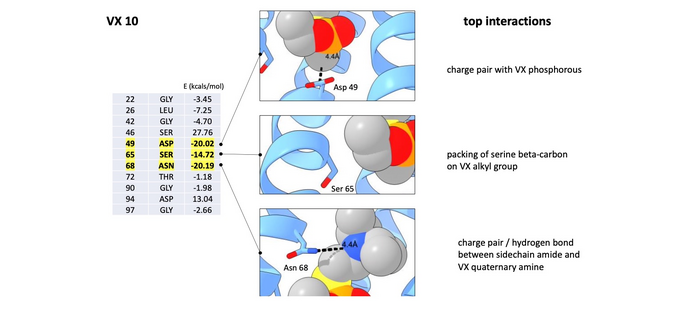City College of New York associate professor of physics Ronald Koder and his team at the Koder Lab are advancing the field of molecular detection by developing the first proteins that can detect a deadly nerve agent called VX in real-time and without false positives from insecticides.

Credit: Koder Lab/CCNY
City College of New York associate professor of physics Ronald Koder and his team at the Koder Lab are advancing the field of molecular detection by developing the first proteins that can detect a deadly nerve agent called VX in real-time and without false positives from insecticides.
VX is classified as a neurotoxin and an incredibly deadly chemical warfare agent that has been used in assassinations by some nations. It can cause permanent brain damage in those who survive exposure.
These potentially life-saving findings are published in the July 2022 edition of “Science Advances,” with lab member Jim McCann serving as the paper’s primary author. It outlines the design of two proteins that detect the neurotoxin by changing their shape in the presence of VX.
In collaboration with Douglas Pike and Vikas Nanda at Rutgers University, the CCNY team used a protein design program called ProtCAD to design 20 different proteins. According to Koder, the computer code was new and unlike anything the team had previously worked with, so it came as a bit of a surprise that two of their protein designs worked rather quickly.
“Having the first thing we tried with a small molecule actually just work was pretty great,” Koder said. “In that absence of VX, all of the negative charges repel each other and then the protein unfolds. And it really extends, almost like a stick. When the protein binds VX it wraps all the way around the molecule becoming much more compact.”
Previous detectors for this type of molecule often produced false positives from chemicals like insecticides. This new design can help prevent those misleading results, by scanning the entire molecular surface down to one hundred-millionth of a centimeter.
“We get this remarkable specificity because we’re making contact with the whole molecule,” said Koder.
This work adds to a rapidly advancing field of biosensing technology used to detect the presence of incredibly small molecules called biomarkers.
The project was funded by the Air Force Civil Engineering Center/Defense Threat Reduction Agency in collaboration with The City University of New York, Clarkson University and Rutgers University.
Journal
Science Advances
Method of Research
Experimental study
Subject of Research
Cells
Article Title
Computational design of a sensitive, selective phase-changing sensor protein for the VX nerve agent
Article Publication Date
6-Jul-2022




